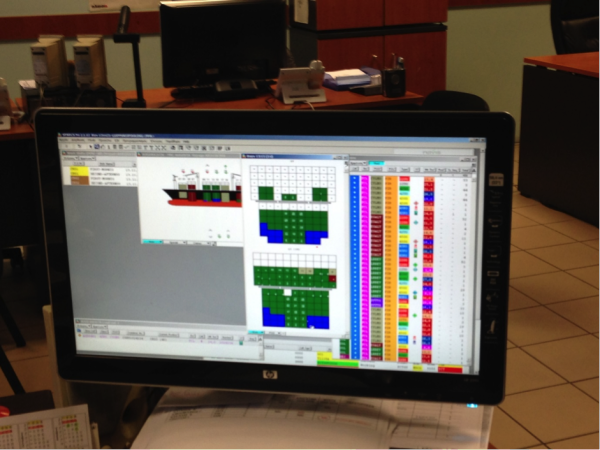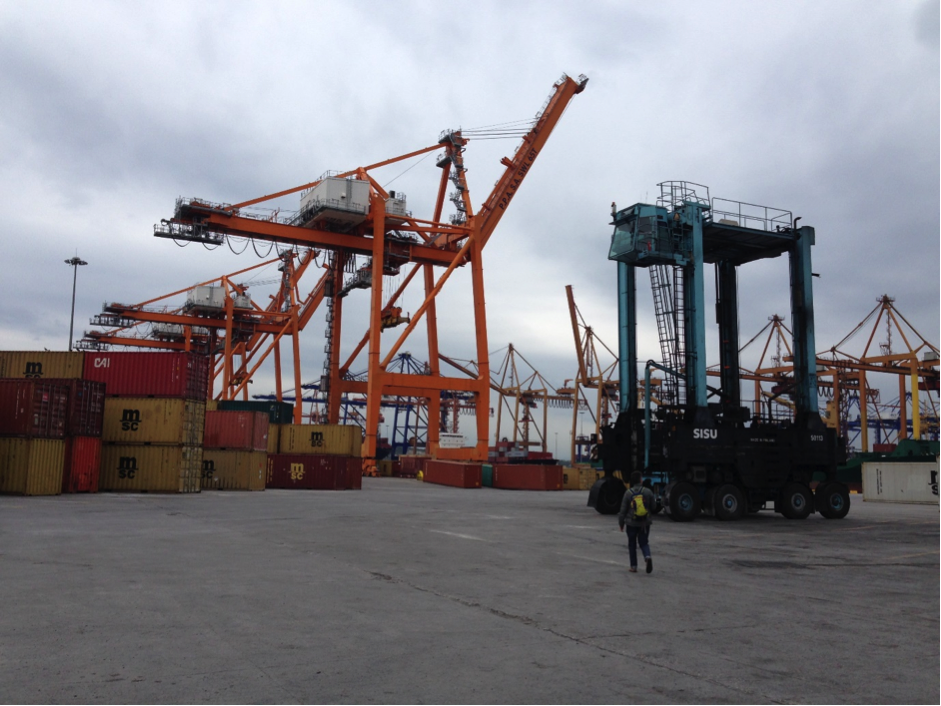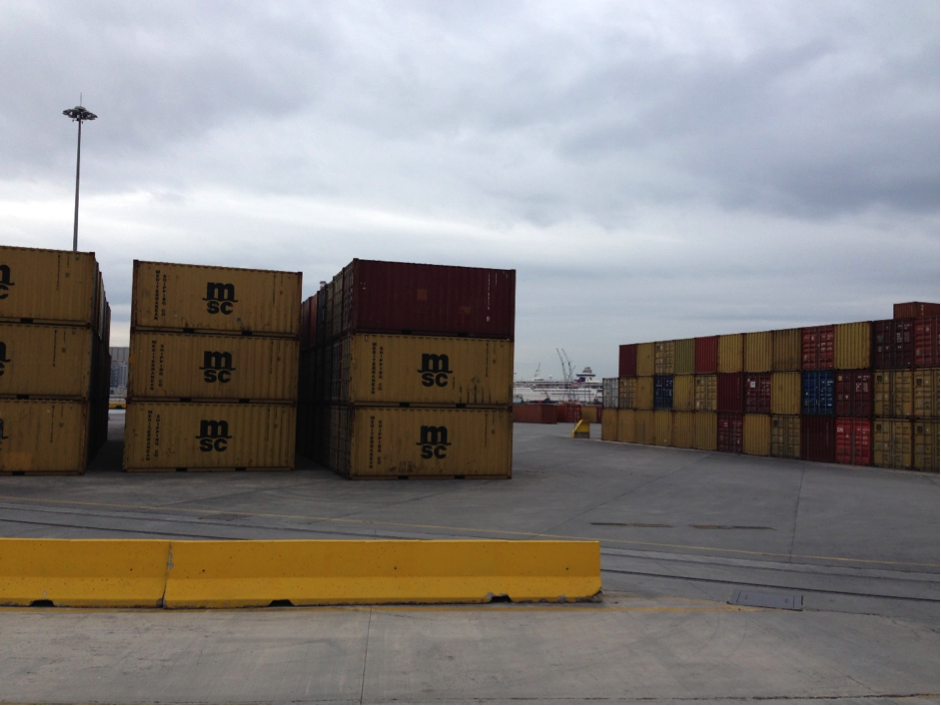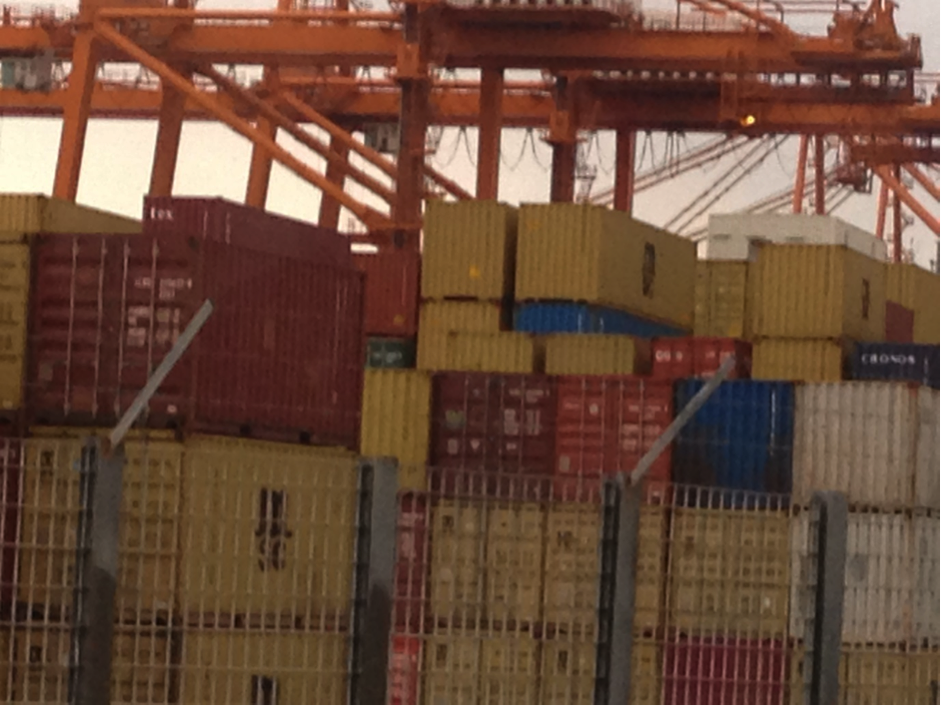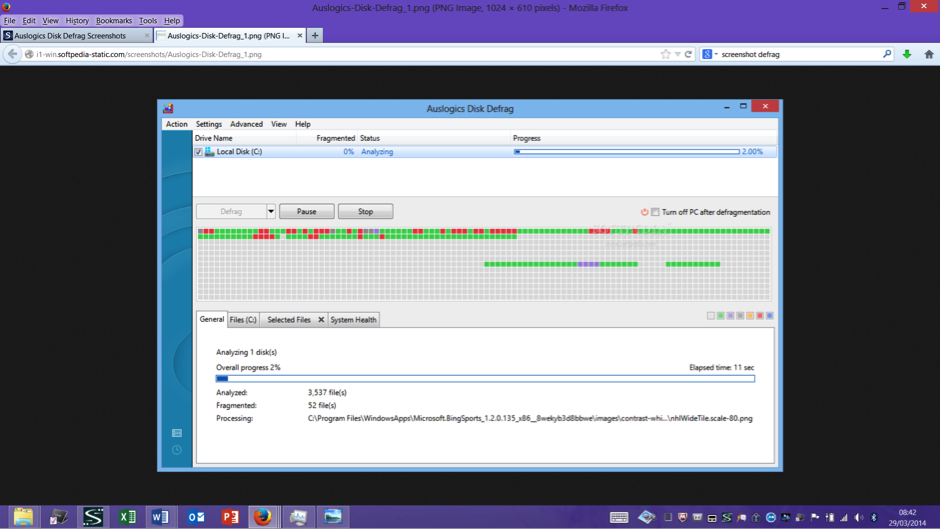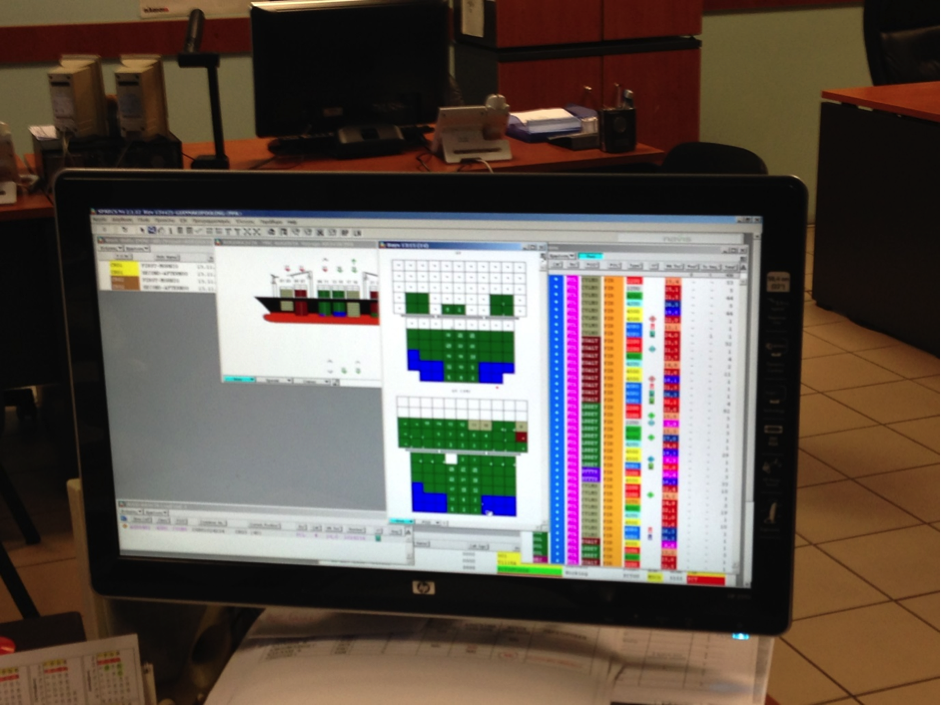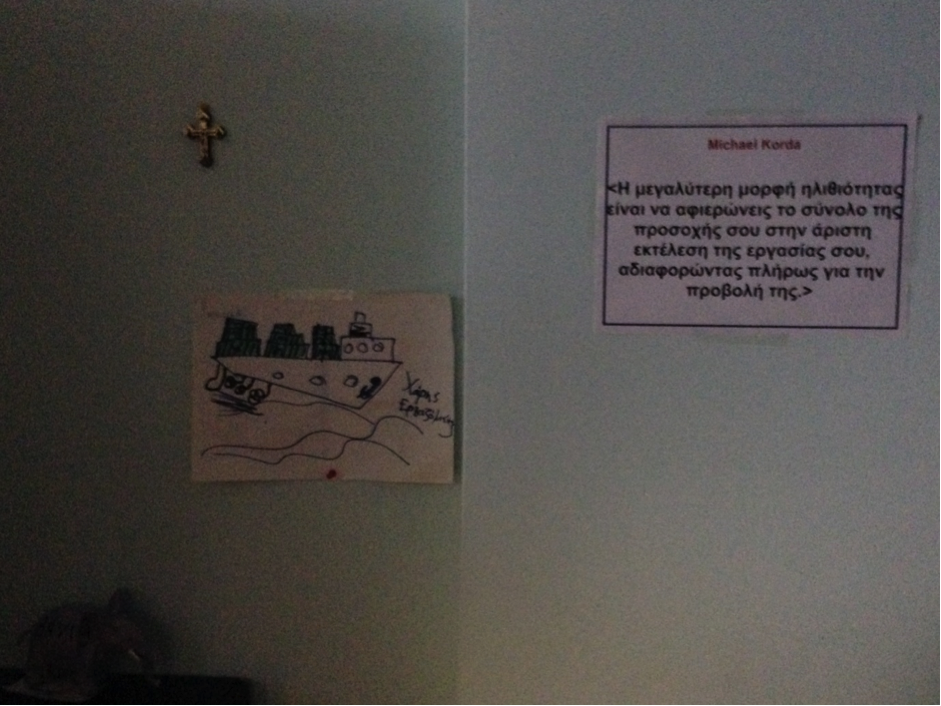Ursula Huws
A baby sardine
Saw his first submarine
And cried as he looked through the peephole
‘Oh come, come, come’, said the sardine’s mum
It’s only a tin full of people
Spike Milligan, 1968.
The container is simultaneously both one of the most concrete examples of the economic logic that enables global capitalism to function and one of the most potent metaphors for the social life of the population whose choices are shaped by this economic logic.
Pete Seeger’s 1963 hit ‘Little Boxes’ gave the hippy generation of the later 1960s a symbol of conformity against which they could define themselves: ‘and the people, in the houses; they all went to the university and they all got put in boxes and they all came out the same’. But surely the central, heart-breaking, observation to be drawn from that imagery of ‘little boxes, all the same’ that are ‘all made out of ticky-tacky’ is not so much that their inhabitants are all the same but that their diversity is constrained by structures that severely repress or distort any external expression of it. The complex irregularity of life, its pains and pleasures, hopes and triumphs are all jammed, like sardines, into contorting containers, physical or organisational such as repetitive labour processes, timetables and mass housing. The boxes may be the same but the people inside them are not, and therein lies the tragedy and hope of their lives.
Spike Milligan’s ‘tin full of people’ could be a commuter train, an airplane, an apartment block, a factory, a warehouse, a supermarket or an office workstation. The more standardised the unit, the greater the possibility for connecting or interchanging it with others, for replicating it, and for reconfiguring its arrangements in time or space. Global value chains depend crucially on modularisation. The use of standard weights and measures is as old as trade itself and as intimately connected with human labour processes – the standard size of a brick, a bottle or a barrel dictating the hand-span or muscle-power required to shift it just as the price – whether of goods or labour – is related to the number of units. Standardisation is essential to the mathematics of commerce and embedded in all its functioning.
The dimensions and ratings of the intermodal freight container were standardised in January 1968 and its identification markings seven months later. This universally agreed size – which suits containers for transport on a single truck or rail flat car – is such that they cannot be lifted by human effort alone. The labour of handling them is therefore dictated by the demands of the technology. The view of the container port in Piraeus is dominated by geometric stacks of containers and the silhouettes of cranes and their eerie vertical and horizontal movements through three dimensional space. The crane operators in their cabins are barely visible except on their way to or from their work stations. The containers are uniform and (like the residential little boxes Seeger sang about) distinguished from each other – at least to the human eye – only by their colours and corporate markings.
The diversity and irregular shapes of their contents cannot be guessed and are removed from any direct contact with the workers who guide their passage from factory to warehouse to dock to ship, across seas and countries, to other docks and factories and warehouses and along ever more roads, to the opening, the moment of being seen, and a transitory existence (in the case of inanimate objects) to human use before the onset of entropy, and yet another journey as undifferentiated content, this time to a landfill site.
The regularity and conformity of the standardised containers is visually very similar to the representations of the compartments of a hard disk, as portrayed in the programs used to defragment them. Here too, differently coloured rectangles are tidily reorganised, with no clue to the nature of their digital content – poems, pictures, love letters or invoices. Who knows?
The programs used by the port workers in Piraeus for working out the optimal sequence for unloading the containers from a ship and stacking them on a pier are strikingly similar. Seemingly abstract coloured rectangles are manipulated on a screen to dictate real realignments in time and space. These workers do have some hypothetical knowledge of the contents of the containers, encoded on their systems. So their judgements about how and where to stack them are informed by the relative weight of the contents, the container’s next destination and whether or not the contents are deemed hazardous. But increasingly this information remains in the domain of supposition. Cosco does not allow national or international inspectors to enter their part of the port to check the containers physically. For all anyone knows, any given container might contain nuclear waste, illegal drugs, weapons or a frightened group of undocumented migrants.
In this Legoland where standardised containers are redistributed using standardised symbols manipulated by workers with increasingly standardised labour processes, whether in the port office, on the pier, on board the ship or on the vehicle taking them to their next destination, workers’ individuality of the workers still finds some expression. Beside the desk of one remote operator working at the Piraeus Port Authority (OLP) terminal, a child’s drawing of a container ship sits alongside a crucifix and a quotation from Michael Korda, attesting to the worker’s active spiritual, intellectual and emotional life.
But to be alive is not necessarily to be well. Whilst solidarities undoubtedly exist, the bleak divisions imposed by the modular logic of global trade are hard to cross. Containers are carried smoothly from ship to shore but the ship workers employed by the Chinese operated Piraeus Container Terminal (PCT) are kept firmly behind fences and do not interact with the Greek dock workers. Fences also keep residents, public sector workers and inspectors out of the private piers of PCT. Like an alimentary canal through which indigestible pieces of food pass without any direct contact with surrounding tissues, this piece of corporate corridor has minimal contact with the surrounding territory beyond sucking in labour power and exhaling pollution, and a very small sweat of wages, into the Piraeus economy.
Human beings produce the hidden contents of these containers and human beings consume them, but the labour involved in both production and consumption processes is increasingly shaped by imperatives of the global commodity chains that link them: imperatives of standardisation and containment. Yet these imperatives are contradictory. The hard disk sometimes needs to defragment, and sometimes (in moments of crisis) an attempt is even made to undefragment. These dialectics of fragmentation, defragmentation and reconnection offer, perhaps, our best hope for the future.

